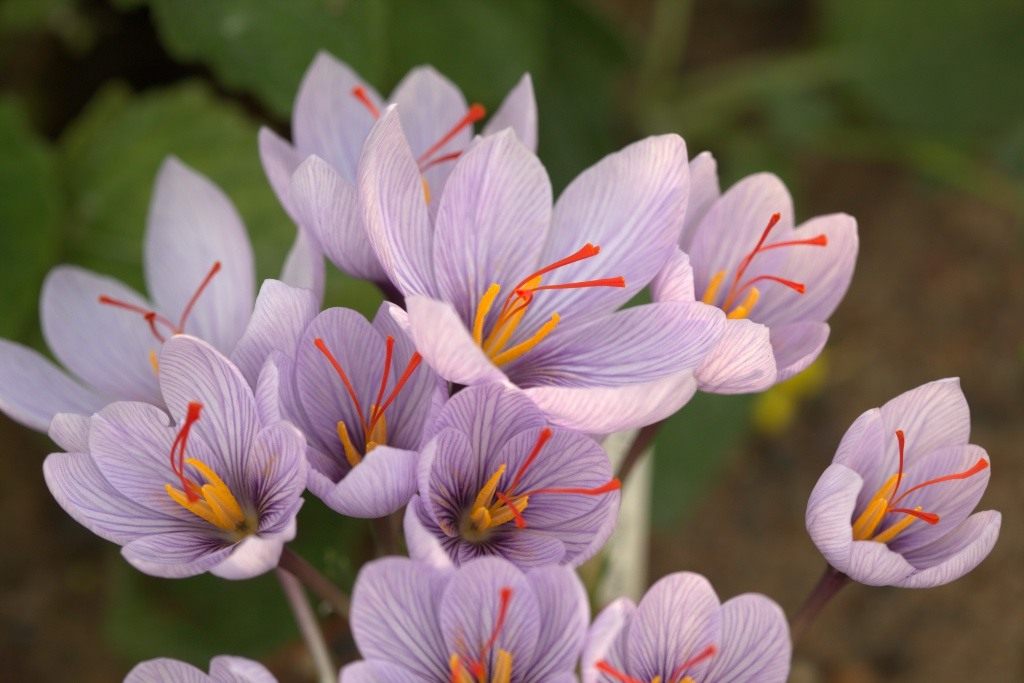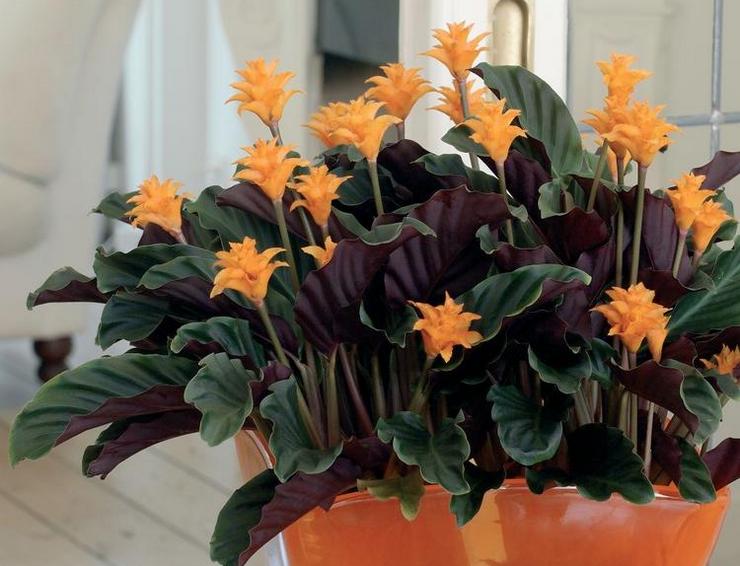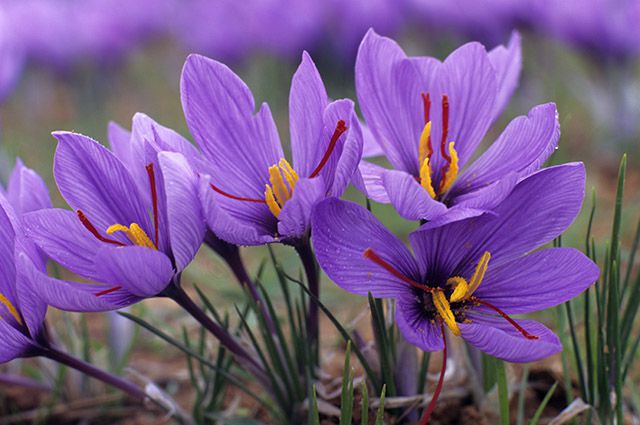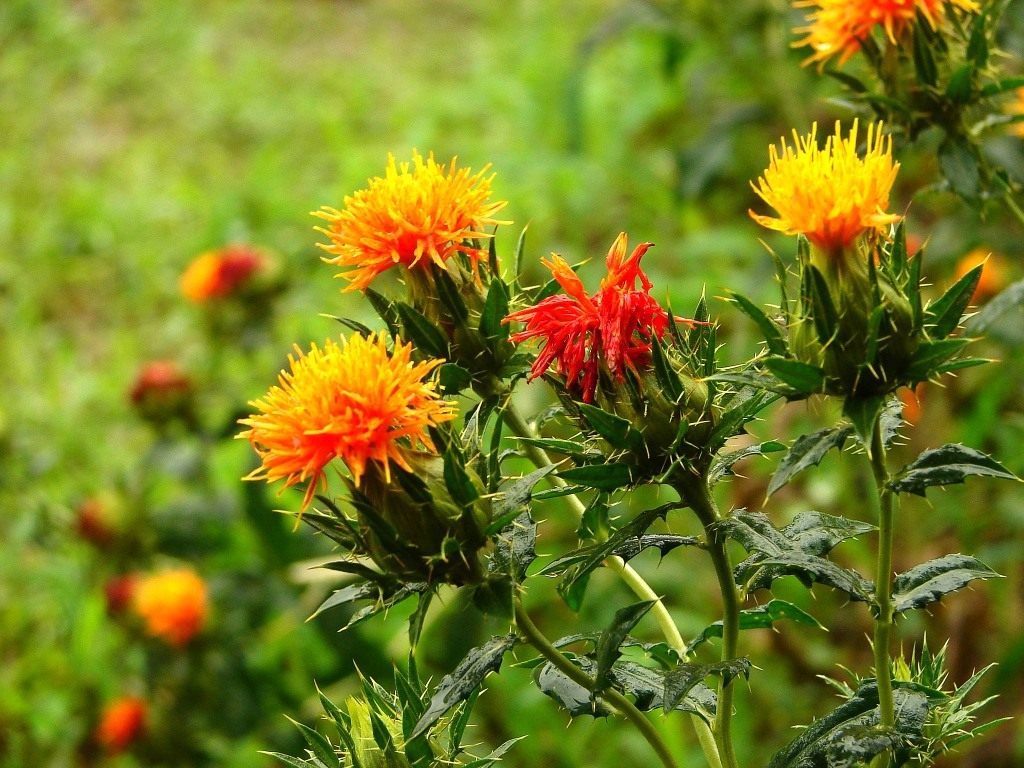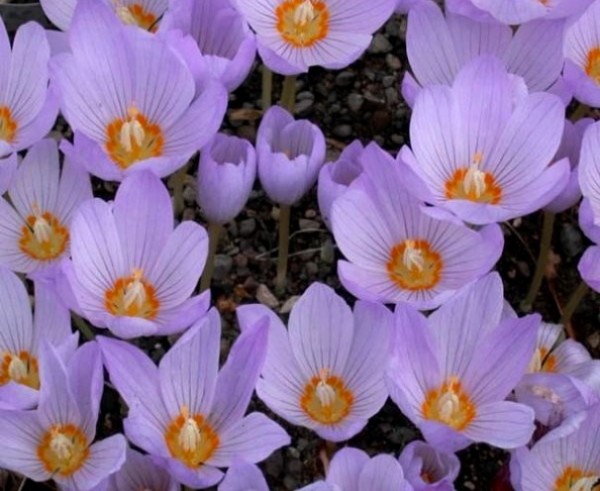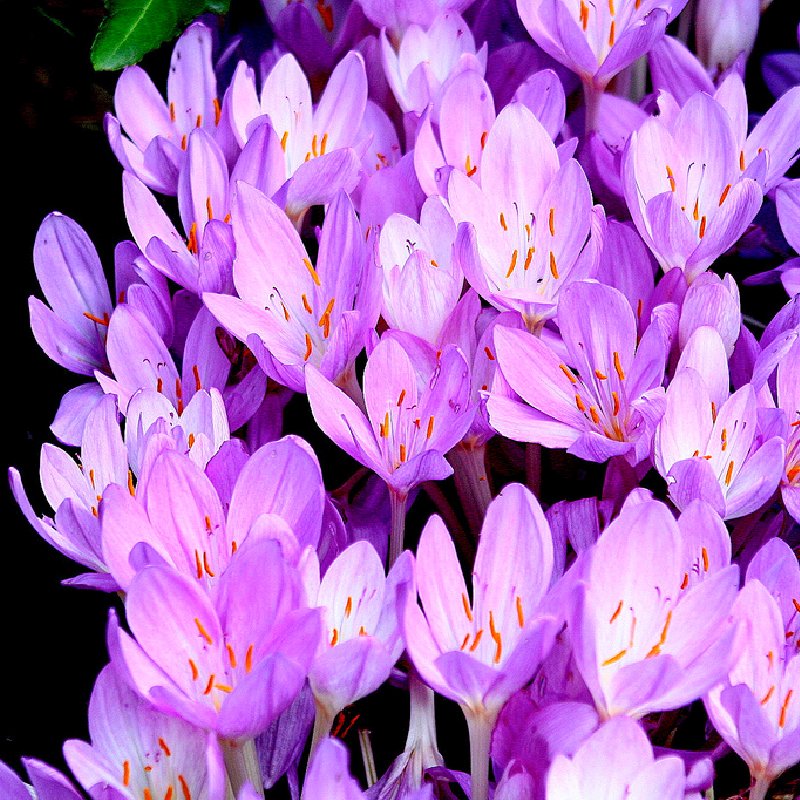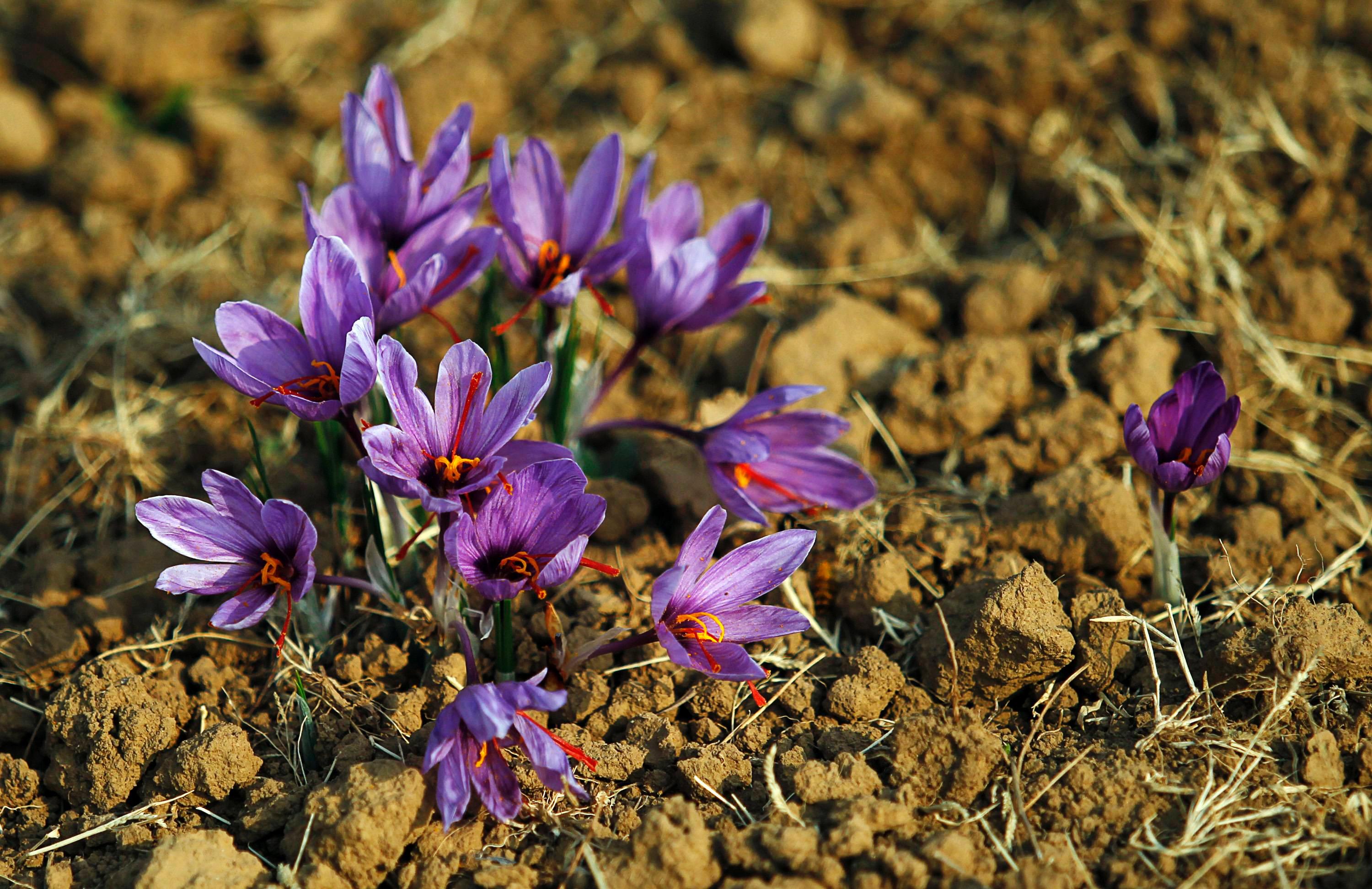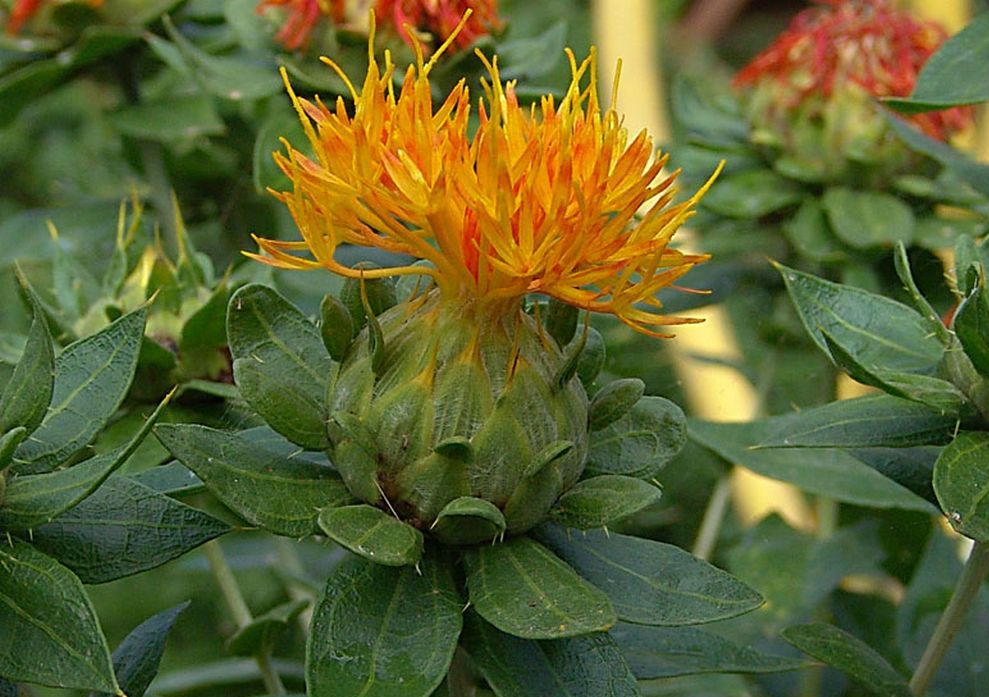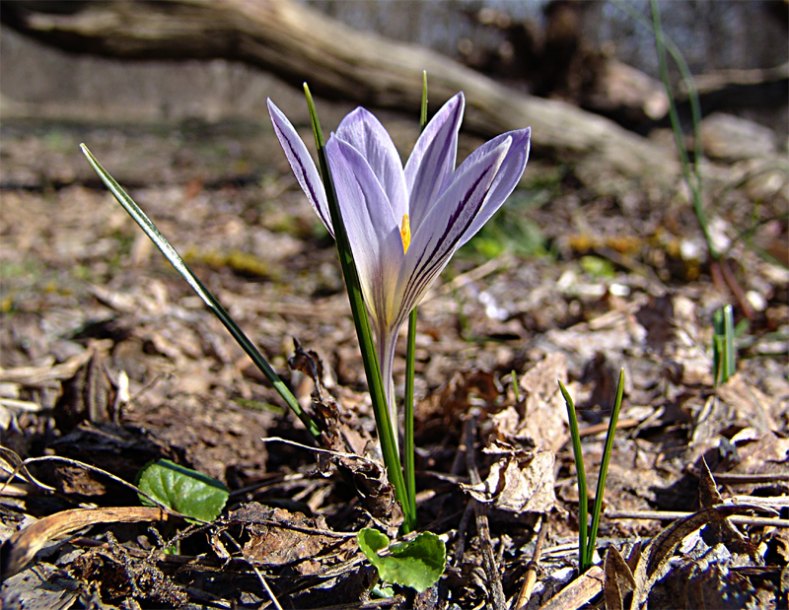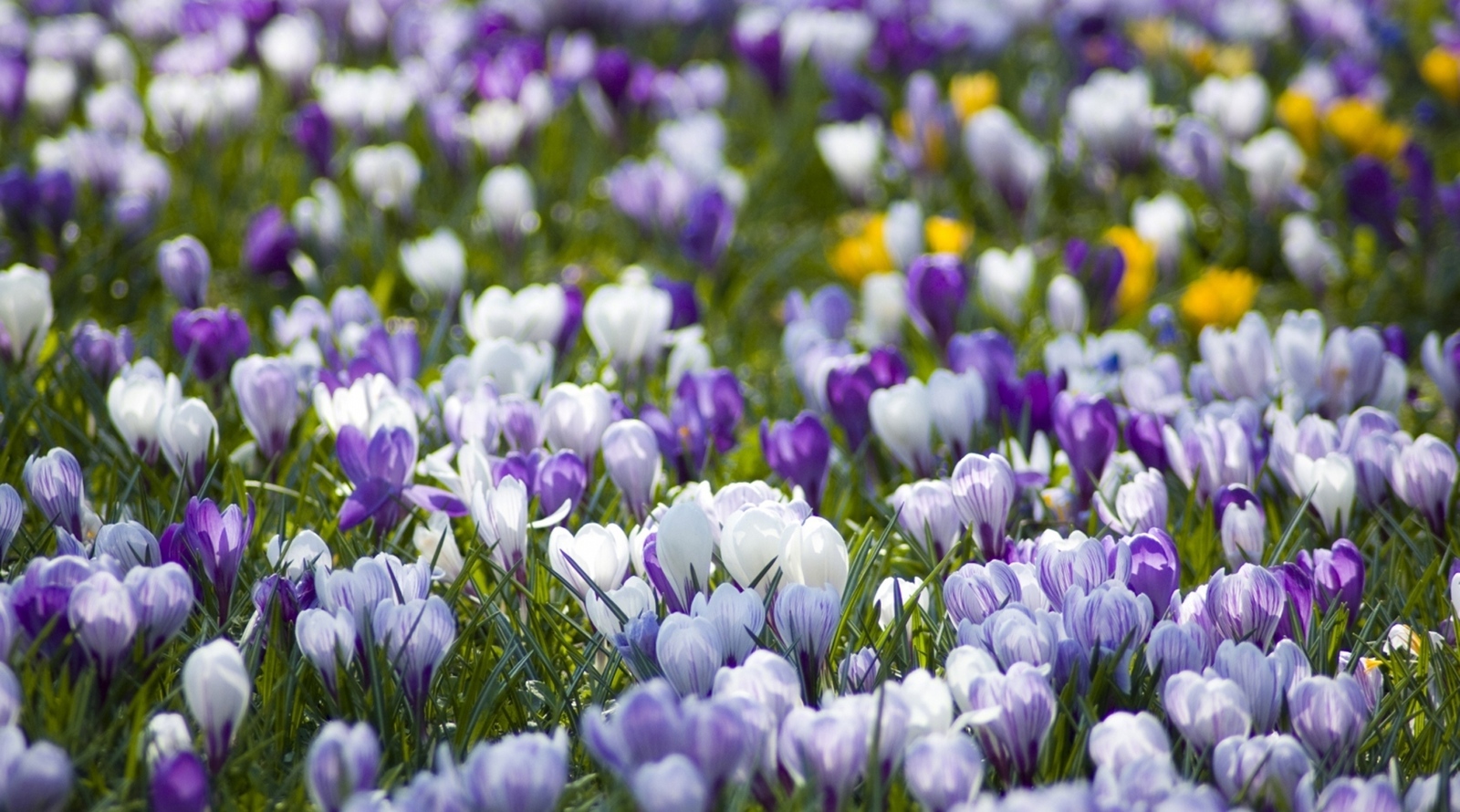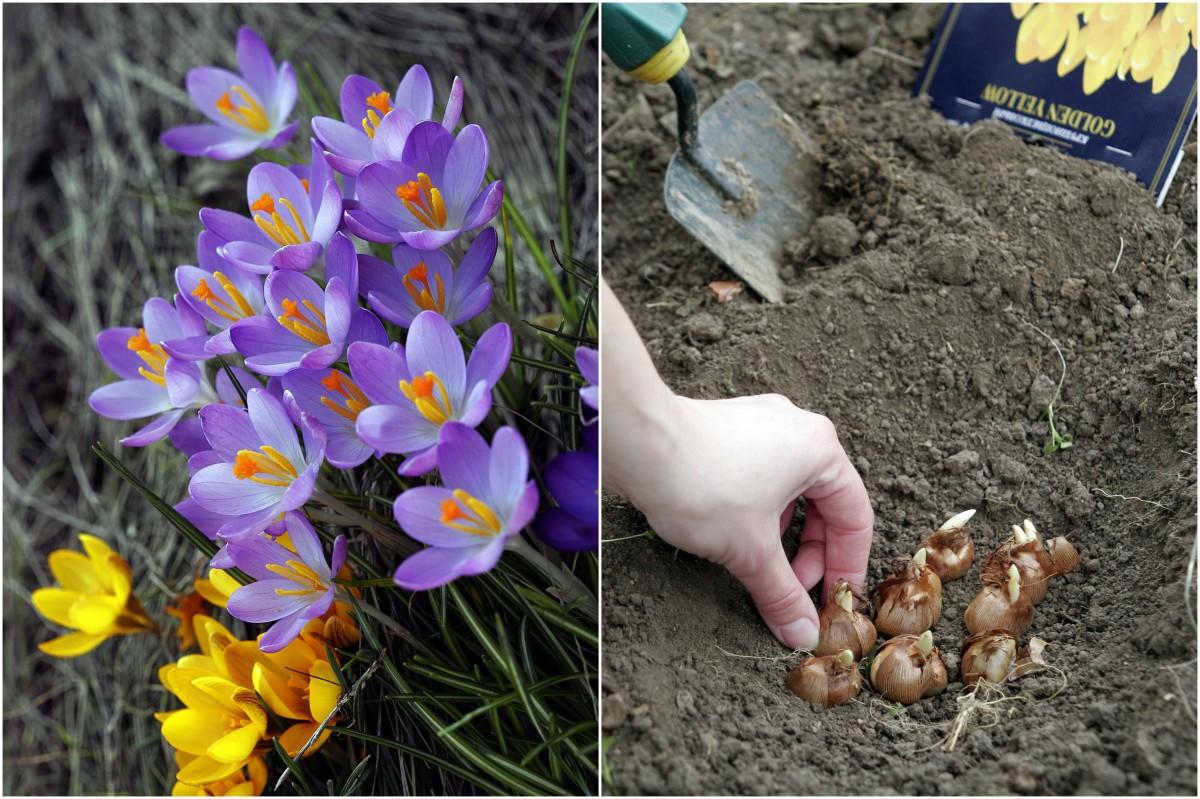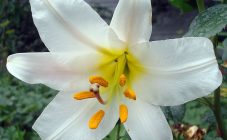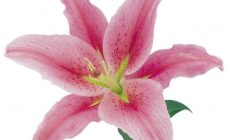Content:
Saffron has long been considered one of the most popular ornamental plants. It is cultivated both in natural conditions and at home. In the latter case, you need to know what saffron is, what saffron looks like, where saffron grows, and also know the agricultural technology of growing the crop in question.
Saffron: what is it
Saffron is a culture that unites a number of herbaceous perennials belonging to the Iris family (Iris). Crocus is another name for this plant that is widely found in the scientific literature.
It is usually grown from spherical tuberous bulbs, the diameter of which can reach 3 cm. They are flattened or round, covered with dense scales. A pronounced stem is absent in plants as such. Leaves are linear, developing from the root system. Formed during flowering or at the end. Flowers in most cases are located separately, sometimes 2-3, covered with scaly films. The fruits are three-celled capsules. Seeds are angular, small in size. Some varieties do not form seeds at all. The color of the petals is most often represented by various shades of blue and yellow flowers.
The main purpose of saffron is decorative cultivation. There is information about the medical properties of culture (lowering cholesterol, strengthening the heart, etc.).
Under natural conditions, crocus (saffron) is widespread in southern Europe, Crimea, the forests of the Caucasus Mountains, as well as in the Middle East and other parts of Asia. There are some species that, due to their scarcity, are listed in the Red Book as endangered plants.
Types and varieties
The genus Saffron includes about 100 species, among which the following are most common:
Calathea saffron. This saffron is a plant native to the tropical regions of North America. Herbaceous perennial with a powerful root system. It has a short stem, from the base of which a large rosette grows with oblong leaves attached to the petioles. The leaf blades are relatively large (on average 30 cm in length), characterized by an ovoid shape. The outside is emerald in color and the inside is purple. The flowers are tubular, bloom in January-March, arranged in small thyroid inflorescences. A single flower blooms for a little over two weeks.
Sowing saffron. A perennial plant in height no more than a quarter of a meter. The tuberous bulb is made in the form of a slightly flattened ball. The foliage is narrow, linear, begins to form at the beginning of the flowering phase and increases in length upon completion. Inflorescences bloom in early autumn and bloom for about 15 days, have a predominantly white color (in some cases, purple and yellow). The fruits are small triangular boxes. This variety does not form seeds and therefore can only be propagated with bulbs.
Wild saffron (aka safflower dye). The plant is annual (in some cases, two years old), up to half a meter in length. The stem is branched and erect, with a glossy whitish color. The leaves are lanceolate-elongated, with a weakly pronounced petiole. The flowers are tubular, have a bright color and are arranged in basket-like inflorescences. The fruit is achene.
Crocus yellow (saffron yellow). The corm has the shape of a ball, slightly flattened at the top and bottom. Its diameter varies from 1.2 to 2 cm. Its shell has membranes and breaks down into vertically directed fibers. The height of the plant rarely exceeds 20 cm. Leaves are usually arranged in 4-8 pieces (in most cases - 5), their length varies within 10-23 cm, and their width is 1-4 mm. The flowers are most often located separately (in some cases there are 4 of them), the petals are rich yellow. Flowering begins in February and usually ends by April.
Autumn-blooming crocus. Sometimes a separately distinguished variety, which is distinguished by flowering in early autumn. It requires a certain amount of attention, in particular, special landing dates.
Crocus autumn (colchicum). The plant is capable of blooming both in spring and autumn. The corms are larger than crocuses, more elongated and oblong. The leaves and flowers are rather large.
Kashmir saffron. A plant native to the northern regions of India. It grows up to a quarter of a meter in height and has pleasant bluish flowers. Flowering begins in the last decade of October and lasts until mid-November.
Saffron Safflower. The grass, which is classified as an annual species, reaches 1.5 m in length. Lists are oblong, large and with a thorn border. The flowers are usually orange in color, but can also be yellow. The fruit is an oval white achene.
Net saffron (striped saffron). Herbaceous plant up to 20 cm in height. The tuberous bulb reaches 1.5 cm in diameter and has the shape of a ball, covered with a thick-fiber mesh on top. The stem is practically undeveloped. Foliage up to 1.5 mm in width, linear, greatly increase in length after flowering. Inflorescences are deep purple or white.
Among the varieties of culture, the most widespread and popular is Blue Pearl. It is a perennial plant with strong and abundant flowering. The flowers are light bluish with a yellow base, are medium in size and goblet in shape. The stem is erect, powerful. In general, the plant height does not exceed 10 cm. The variety can be cultivated not only in open ground, but also on the balcony in pots.
Other well-known crop varieties include:
- Zonatus;
- Conqueror;
- Pickwick;
- Oksinan;
- Prince Claus;
- Little Dorrit, etc.
Cultivation agrotechnics, site selection
Crocus is a flower that does not have any particular soil preference, although it prefers nutritious and loosened soil. The only requirement is that the soil must be dried, the plant cannot stand moist soils with constant stagnation of water. On the same plot, saffron can be cultivated for up to five years in a row.
When applying fertilizers, you need to be guided by the fact that saffron will be grown for a long time in this area, so you should use lime, rotted manure, peat and compost as top dressing. On clay plots, ash is applied.
Saffron is a flower that is considered a relatively hardy crop. In the presence of a high-quality shelter with spruce branches and dried grass and snow cover of sufficient height, the plant normally tolerates a drop in temperature to -10C and below. However, in regions with very harsh weather and climatic conditions of the winter period, it is necessary to dig out the bulbs from the ground in the winter.
For crocuses, it is necessary to select a plot that corresponded to the conditions in which this crop grows in its natural form, i.e. conditions of meadows sown with perennial herbaceous plants. The plot should be open, well-illuminated by the rays of the sun, warm enough. The plant feels fine under the shade of large deciduous trees. In spring and autumn, when saffron is in bloom, the branches are bare and the crocuses will not lack sunlight. Excessively shaded areas - near conifers and near the walls of buildings - are of little use for this culture, since under such conditions saffron does not form so many buds, and their opening will be weak and incomplete.
Landing dates
The vegetative developmental phases of saffron flowers that bloom in spring or autumn do not coincide. This is the main factor that is taken into account when choosing a planting date. So, plants blooming in spring are planted in autumn, and autumn blooming plants in summer.
The best period for summer planting is in July and the first August decade (more exact dates depend on the specific species and variety). Plants blooming in spring should have time to root normally before the frost period, as a result of which planting in cold regions is carried out already in the last days of August, and in the south this procedure can be plants until the tenths of October.
Planting saffron
Most often, bulbs are used for planting and breeding crocuses. Before planting, they are thoroughly visually inspected for the presence of arrows - small shoots that should be left in place without breaking. If there are traces of damage or microtrauma on the planting material, they must be disinfected by dusting with wood ash.
On heavier soils, the planting depth of the bulbs should not exceed 8 cm, while on soils with a light composition, this indicator can be increased to 12 cm. Between the bulbs, spatial isolation should be maintained at the level of 7-10 cm.Its absence will cause the risk of spreading fungal diseases and reduces the duration of the flowering period. Upon completion of planting, the plots are abundantly shed and mulched. It is recommended to use ground plant residues or humus as a mulching material.
Another method is sowing seeds, which is usually used in cases where it is necessary to quickly obtain a large number of varietal plants. Seeds are sown into the ground to a depth of no more than 1 cm. Plants obtained on a seed basis begin to bloom, as a rule, in the 3-4th year.
Plant care
Like most plants of the Iris family, saffron is considered one of the most unpretentious garden and ornamental crops, but even it needs a certain minimum of agrotechnical measures. In ultra-early varieties, it is only required to pre-cut the grass cover before wintering. This is due to the fact that their flowering phase coincides with the beginning of the melting period of snow masses, when no work has yet begun on the site.
Irrigation
When watering saffron, the main thing is the moderation of the amount of introduced moisture. Flowering takes place in relatively cool periods of the year, as a result of which the liquid from the ground does not have time to evaporate in time, causing stagnation in the soil. This, in turn, leads to rotting of the tuberous bulbs. If the plants are planted in the sand, then a single irrigation per month is sufficient.
Top dressing
The optimal options for organic fertilizers for crocuses are completely rotted manure and peat. During the period of active plant growth, a ready-made complex of mineral fertilizers shows high efficiency.On saffron, which blooms in spring and are primroses, they practice scattering fertilizers over the surface of melting snow in early spring. As the first shoots form, additional feeding is carried out using urea.
After two weeks, phosphorus-potassium fertilizers are applied under the crocuses. This is necessary in order to strengthen the plantings and improve their health. If it is impossible to use them, it is allowed to use wood ash as an alternative.
Harvesting and storage of crops
The corms begin to be harvested immediately after the foliage begins to turn yellow. In the middle lane and northern regions, the procedure is carried out in the first half of summer, and in the south of Russia - in May-June. Harvesting is recommended annually, although the plant can usually be cultivated in one place for up to 4-5 years.
The remnants of the uterine tuberous bulb should easily and without difficulty be separated from the new bulb. The collected plant materials are laid out under a canopy for drying and cleaned of earth clods, particles of mother bulbs, and scales. Then the bulbs are divided into varieties and placed in wooden boxes, which are installed in a dry and ventilated room. During storage, the optimum temperature for crocuses should be maintained - +18, 20C.
Reproduction of culture
A simpler breeding method is bulb division. In this case, as the mother's bulb dies off, new bulbs need to increase living space. After 2-3 years, a compacted bulbous nest is formed in this place, which should be planted.
Seed propagation is also practiced. Upon completion of the collection from the ripe bolls, the seed is subjected to two to three weeks of drying. If necessary, seeds are calibrated and treated to disinfect and protect against disease.
Diseases and pests
To prevent the spread of fungal diseases, it is necessary to carefully follow agrotechnical recommendations, in particular, observe spatial isolation and avoid waterlogging of the soil and excessive application of nitrogen and other fertilizing. Before planting, the bulbs should be sprayed with preparations containing copper, and when the first symptoms appear, fungicides are used. More harmful are viral diseases, as a result of which plants are deformed and change color. There are no drugs against them, so you should resort to the following measures:
- observe crop rotation;
- fight against pests that can introduce infection;
- dig up and burn diseased plants in a timely manner.
The most dangerous pests for crocuses are rodents and aphids. Insecticides or poisonous preparations are used against them in a timely manner, otherwise they will quickly destroy the plantings.
Cultivation of a culture requires knowledge of what a crocus is and its features, increased attention and strict adherence to all agrotechnical requirements. However, the work of the gardener and summer resident will certainly be rewarded with pleasant high-quality crocus plantations.
